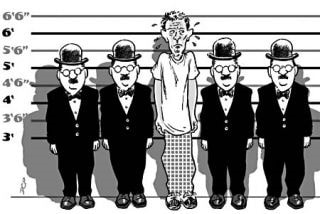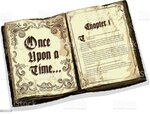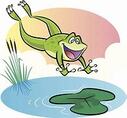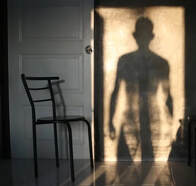
The Publishing Industry has changed dramatically in the past five to ten years. Self-publishing is no longer considered as lower than pond scum, electronic publication is here to stay [for a while, at least], and the tastes and interests of the public have exploded. Many new possibilities have opened up for fiction writers. It’s a new game in many respects.
The unfortunate truth, however, is that the marketing of a novel falls primarily to the author unless you are a big-ticket author, which most of us aren’t. Marketing is consuming a large part of the writer’s working time when we should be writing instead. Fortunate, while social media sites come and go, the ways of going about finding your audience haven’t changed a lot.

A crucial part of marketing is assuring your message is being seen and heard by the people most likely to purchase your book -- your Target Audience. Target marketing is one of the important keys to success, whether or not you hire someone to do the marketing for you or you do it yourself. By targeting your message, you're more likely to maximize the return on your time and marketing dollar.

● Market yourself as an author and a person, not just your book.
● Know the thematic statement of your novel.
Every book needs a thematic statement — the lesson to be learned, the impact on the reader, the reason the author wrote the book. That is the key to who will want to read it. Part of your marketing strategy is connecting your audience with the main theme of the book.
● Write for your audience.
Think about who will want to read your book, preferably before you start writing it. Keep your audience in mind while you write it. One of the biggest mistakes authors make, particularly fiction authors, is failing to identify their target audience before writing the book.
● Begin marketing well before your book comes out.
That means selling yourself as a person and making your target audience aware of you before your book is available. But wait! To whom are you going to market your book?

Think about why would someone want to read your book? What segment of the population were you thinking about when you conceived the idea for this book? Who did you want to help, educate, inform or entertain? And most important of all, what does your book offer that others in the same genre do not. How is your book unique?

Kimberley Grabas writes, "Trying to appeal to the masses instead of understanding the needs, wants and desires of a select few — the ‘right’ few — is the recipe for a book launch flop.”
Easier said than done, but it is essential. The article "Finding a Target Audience for Your Book in 3 Steps" indicates that authors must learn to see things from the perspective of the reader in order to find the 'right' audience to read your books and discover the most effective channels for reaching them.
https://www.matilijapress.com/articles/DetermineTargetAudience.htm

Self-examination is essential first before you can find your audience. In addition to knowing who you are and how to project that to your audience, you must know the thematic statement of your novel and what you want the reader to feel and think about once they have read your book.

Don’t assume you already know your audience, or that they are just like you. It’s possible, but is not always the case that your audience will think like you. So do the work to confirm what your readers actually want; not what you think they need. They are not just a faceless group of people.
● Find who wants to read your book.
You’re looking for the people who already want to buy your book. It's tied to the thematic statement and the style of book. There are people out there who are interested in the theme, style, what is unique about it.
Author Marcia James’ Ten Tips to Niche Marketing gives excellent advice on how to identify those people who may want to read your book. Think about: genre and:
•Who might connect with your characters, your thematic statement, your setting, the circumstances of the novel, etc. Who did you want to help, educate, inform or entertain? You may have several audiences. That’s great. List them.
• Who might connect with you as an author and/or a person and what is important to you.
• What does your audience needs? What do they want? What do they value?
• What is most important to them?
• What are they least likely to care about?
• What you have to say that might surprise your audience?
• What you want your audience to think, learn, or assume about you? What impression do you want your writing to convey?

Once you have a good handle on why you write, your message, and who needs or wants to hear that message, you need to consider the demographics related to those groups you believe might be your target audiences. Mothers of small children? Teachers? Single young women looking for husband material?
Most businesses depend on market research and demographics to plan their marketing. Writing is a business, and authors should approach finding their audience and marketing in the same manner.
Demographics describe the profile of a particular market segment. Psychographics are the attitudinal traits people exhibit in their approach to life. Because both sets of traits have an impact on buying behavior, both have an impact on how you should package, price, and communicate your book to your target audiences. Even the cover.
There are a number of polls and surveys prepared by others which authors can use. In most cases, those are not necessarily focused on your target audience, and they are not necessarily done every year. However, they’re useful in deducing who is most likely to be interested in what you’re selling — you as an author and your books.
While you may think that there is nothing available on romance readers or any other particular genre, there are actually polls being taken all the time for various reasons. In particular, if you write romance, RWA has polls on readership that are very valuable.


Social media is an ideal tool for understanding potential readers and connecting with them. Successful social media marketing takes time and patience, dedication and consistency, and a sincere commitment to making your interactions personal.
You don't want to harass your readers. It is essential to be transparent, friendly and personable. Who knows? You might just find that making friends online is just as fun as meeting people face-to-face!
● One of your strongest strategies should focus on engagement, and being present, with your audience. Trying to plan every last detail of your marketing efforts will only undermine them.
● Most readers aren’t going on social media to buy a book. They’re using social media to engage with other readers, authors, and friends. Don't bombard them with ads and sales pitches.
● Be authentic and real with your followers, and they will be sincere with you. It’s all about being sociable without being annoying, just like in real life.
● Hashtags and other similar tools are your #friends. They categorize the plethora of content being posted, by working as searchable tags and keywords. They assist in developing an online presence and reaching out to your audience. If used correctly, hashtags can connect you with readers all over the internet. If used incorrectly, they just clutter all of your wonderful content. Don't use too many.
Facebook Audience Insights can give you incredibly detailed data on audience demographics and interests. By searching for people whose interests include Stephen King, we know their age and gender split, geographical location, as well as other pages they’ve liked. The same applies to all other social networks like Twitter and Instagram and others. If you want to find out who is talking about a book (or an author, an interest, pretty much anything), you can use Twitter Advanced Search

Studying demographics sounds onerous to those who haven't done it before. Don’t despair. There are other ways to find out your audience by comparing the works of other authors in your genre’.
Find out which books on the market are closest to yours in theme and style. If you were to compare your book to other titles that are already out there, which ones would they be? What kind of people comprises the readership of these books?
A little bit of analysis will help you further refine your proto-persona. Find out which authors are published in the same genre, who writes in a similar style or about the same or similar topics. Find out which authors are successful and popular. Read their books and look for similarities and differences.
In other words, identify your competition. Be able to make the comparison off the top of your head. Always think about what makes your work similar to, but unique from, the best sellers. Use #hashtags to browse your genre community.
Also, you need to follow (and read, read, read) your competition in order to know what makes your work different from theirs and, of course, why those novels are selling. That's something you need to be able to articulate to editors, agents, and to your audience.
● Connect With Your Competition
Follow these authors on FaceBook, Twitter and other Social Media. Engage them and communicate. If you’ve read their work, you can make specific comments. Put reviews on Amazon and GoodReads and other sites. Go to their book signings if you have the opportunity, or meet them at conferences.
●Their Audiences May Be Your Audiences
By following successful authors and reading their works, and particularly by posting reviews, you also get to know their audiences. See if you can deduce from comments and followers, who their audiences are and what they are interested it.
Are they the same from one author to the next, or different? Can you tell why? Get to know others who follow these authors. What techniques do these authors use to market to this audience? You might even be able to ask the authors questions about their audiences and get some pointers
However you use the various social networking opportunities, you have to give something to those you follow and follow you. And that something needs to be of value to them, something they want. Substance is critical. Since a large part of capturing your audience’s attention depends on how you engage with them, notice how your favorite authors interact with their fans.
● Learn From The Best
The bestselling books and/or bestselling authors dominate a lot of the readers’ market, and your competition is vast (four million books), but don’t see this as a roadblock. Bestsellers will always exist, and there will always be more mid-list authors. But there will also be new authors moving in alongside the established ones. It takes new blood to keep readers interested in the same genres.
● See How Other Authors Engage Their Audiences
Since a large part of capturing your audience’s attention depends on how you engage with them, notice how your favorite authors interact with their fans. What topics do they Tweet about? What does their audience respond to? Emulate people who are already where you want to be, but do it with your own unique voice. Just don't copy.

Once you've identified your audience, and you know where they hang out and what interests them, use #hashtags to browse your genre community.
● Engage in Social networking and self-promotion
However you use the various social networking opportunities, you have to give something to those you follow and follow you. And that something needs to be of value to them, something they want. Substance is critical. Since a large part of capturing your audience’s attention depends on how you engage with them, notice how your favorite authors interact with their fans.
There are many classes and training opportunities to give you good information about using the various social media. StumbleUpon is one I had never heard of before. http://www.stumbleupon.com/about/.
StumbleUpon, a form of web search engine, has actually been around since 2001, but has only become popular in the past several years. A lot of this is due to the site becoming available on mobile platforms as well as on the web outside of a browser extension.
I've never used it, but I've read that what's really amazing is that, despite a membership of about 25 million compared to Facebook's 900 million or Twitter's 140 million, it's already driving more than 50 percent of social media site referral traffic.
Who knew?
● Narrow your audience.
Once you are clear about your audiences, make an effort to find a specific niche. While it seems that getting the word out to as many people as possible, that motion is not entirely correct. For one thing, the narrower the audience, the less competition. You'll get a better return on your efforts. It also helps with:
• Key words
• Tagging on Amazon (and other locations)
• Nothing replaces face-to-face marketing and word of mouth
• Speaking Engagements at local book clubs, libraries, service organizations, etc.
• Book signings
• Guest lecturing at local service clubs, women's clubs, etc. They always want speakers.

JUST SAYIN' !
□
Sources:
http://marthaengber.blogspot.com/2011/07/how-authors-find-their-audience.html
http://spiritauthors.com/news/target-audience-knowing-finding-and-reaching-your-readers/
http://writing.colostate.edu/guides/page.cfm?pageid=327
http://paintthistownred.wordpress.com/2012/08/01/finding-your-niche-a-guest-post-from-marilyn-baron-author-of-dead-mix/
http://voices.yahoo.com/how-find-writing-niche-5344877.html
http://freelancefolder.com/7-ways-to-find-your-freelance-writing-niche/
http://www.examiner.com/article/finding-your-creative-niche
http://www.articledestination.com/Article/Finding-Your-Writing-Niche/7524
https://www.matilijapress.com/articles/DetermineTargetAudience.htm
http://www.yourwriterplatform.com/how-to-target-an-audience/
https://blog.reedsy.com/3-steps-reaching-target-audience
http://www.thecreativepenn.com/2013/06/13/identify-your-target-audience/
http://www.yourwriterplatform.com/how-to-target-an-audience/
https://monicashaughnessy.wordpress.com/2014/11/06/finding-an-audience-for-your-book-signing/
http://www.janbking.com/2007/05/finding-the-audience-for-your-book/
http://writershelpingwriters./
https://blog.reedsy.com/social-media-tips-for-authors





















 RSS Feed
RSS Feed